Eurovision Song Contest 1979
The Eurovision Song Contest 1979 was the 24th edition of the annual Eurovision Song Contest. It took place in Jerusalem, Israel, following the country's victory at the 1978 contest with the song "A-Ba-Ni-Bi" by Izhar Cohen and the Alphabeta. Organised by the European Broadcasting Union (EBU) and host broadcaster Israeli Broadcasting Authority (IBA), the contest was held at the International Convention Centre on Saturday 31 March 1979 and was hosted by Israeli television presenter Daniel Pe'er and singer Yardena Arazi. This was the first time that the Eurovision Song Contest was held outside Europe.
| Eurovision Song Contest 1979 | |
|---|---|
 | |
| Dates | |
| Final | 31 March 1979 |
| Host | |
| Venue | Binyaney Ha'ooma Jerusalem, Israel |
| Presenter(s) | |
| Musical director | Izhak Graziani |
| Directed by | Yossi Zemach |
| Executive supervisor | Frank Naef |
| Executive producer | Alex Gilady |
| Host broadcaster | Israeli Broadcasting Authority (IBA) |
| Opening act | L'envol by Vladimir Cosma |
| Interval act | Shalom '79 (Peace '79) |
| Website | eurovision |
| Participants | |
| Number of entries | 19 |
| Debuting countries | None |
| Returning countries | None |
| Non-returning countries | |
Participation map
| |
| Vote | |
| Voting system | Each country awarded 12, 10, 8–1 point(s) to their 10 favourite songs |
| Nul points in final | None |
| Winning song | "Hallelujah" |
Nineteen countries participated in the contest with Turkey deciding not to participate after Arab countries had pressured it into not participating in a contest held in Israel.[1] Yugoslavia, who had missed the 1978 contest, also didn't want to take part nor transmit the show this year for political reasons.
For the second year in a row Israel won with the song "Hallelujah", performed by the Israeli group Milk and Honey featuring Gali Atari.
Location

The contest took place at the International Convention Centre, also called Binyenei HaUma in Jerusalem, following Israel's win at the 1978 edition with the song A-Ba-Ni-Bi performed by Izhar Cohen and Alphabeta. The venue, the largest convention center in the Middle East, hosted the contest in the Ussishkin Auditorium which seats an audience of more than 3000 and where it traditionally hosts other musical events including classical and pop stars concerts.[2]
The city's ancient, religious and modern scenery was reflected through a film which opened the broadcast. The city's history as one of the oldest and holiest in the world, was shown through the biblical and medieval monuments and sites sacred to Judaism, Christianity and Islam, as well as visitors and city's residents who frequent them while practicing their faiths. The city's governmental, cultural and educational institutions and monuments, as well as the streets and people outside the ancient wall, were shown at the opening and conclusion of the film.
Format
The 24th contest's logo featured a combination of a G-clef, the IBA logo, and the names of all participating countries in order of appearance.
The stage concept was designed by Dov Ben David. On stage there was a moving symbol which was based on the IBA logo (which was built like a lamp with 3 concentric rings) using a small projected model.[3]
Since Israeli Television had yet to broadcast in colour at that point (except for a few special occasions), the production had to borrow cameras from the BBC, the same had happened when RTÉ had hosted the 1971 contest in Dublin.
The IBA Symphony Orchestra, directed by conductor Izhak Graziani played the music of each song (except for the Italian entry, which did not use the orchestra). This was the only contest where the orchestra was composed of 39 musicians.
Postcards
This year, the postcards between each song featured mime artists rather than the participating singers. The mime artists featured were the Yoram Boker Mime Group, and included some of Israel's leading mime artists, among them Ezra Dagan and Hanoch Rozen. The group performed on a background of illustrations created by Dudu Geva and Yochanan Lakitzevitz, that featured landmarks and typical landscapes of the respective countries.
The various themes were as following, listed in appearance order:
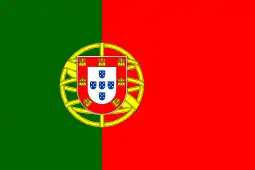 Portugal – Boats and picnic baskets on a Portuguese beach; The mime performers pretend to pull a giant bottle of Porto Wine.
Portugal – Boats and picnic baskets on a Portuguese beach; The mime performers pretend to pull a giant bottle of Porto Wine.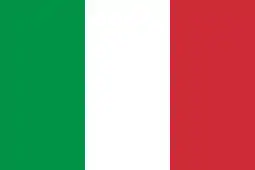 Italy – A photographer using an old view camera, trying to take a picture of tourists on the background of the Leaning Tower of Pisa, when the tower keeps changing its position.
Italy – A photographer using an old view camera, trying to take a picture of tourists on the background of the Leaning Tower of Pisa, when the tower keeps changing its position.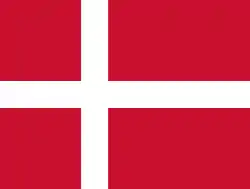 Denmark – A mime performer dressed as Copenhagen's The Little Mermaid Statue, while other figures from famous fairytales by Danish author Hans Christian Andersen (such as The Ugly Duckling) move in the background.
Denmark – A mime performer dressed as Copenhagen's The Little Mermaid Statue, while other figures from famous fairytales by Danish author Hans Christian Andersen (such as The Ugly Duckling) move in the background.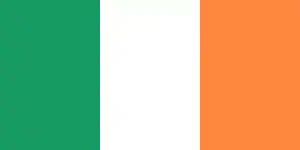 Ireland – Mime performers dance in a typical Irish village, with a background of an Irish pub with the sign of Guinness, famous Irish beer brand.
Ireland – Mime performers dance in a typical Irish village, with a background of an Irish pub with the sign of Guinness, famous Irish beer brand.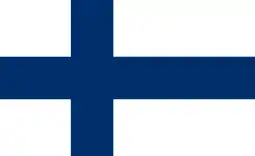 Finland – Mime performers pretending to be ice skating in a snowy Finnish forest.
Finland – Mime performers pretending to be ice skating in a snowy Finnish forest. Monaco – A mime performer pretends to be a track marshal waving a flag at the motor racing Grand Prix de Monaco.
Monaco – A mime performer pretends to be a track marshal waving a flag at the motor racing Grand Prix de Monaco.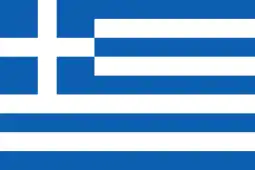 Greece – A mime performer dressed as the Discobolus of Myron statue, standing on the Acropolis of Athens. The statue "comes to life" and throws the discus which causes an audible mayhem, and the presenters Yardena Arazi and Daniel Pe'er take a sneak pick from the columns of the Parthenon, "appalled" by the statue's conduct.
Greece – A mime performer dressed as the Discobolus of Myron statue, standing on the Acropolis of Athens. The statue "comes to life" and throws the discus which causes an audible mayhem, and the presenters Yardena Arazi and Daniel Pe'er take a sneak pick from the columns of the Parthenon, "appalled" by the statue's conduct. Switzerland – Three mime performers pretend to be wooden figures of a Swiss clock, dancing. In the background there are illustrations of the Swiss Alps, a building shaped as a clock and a structure with a rooster shaped weather vane.
Switzerland – Three mime performers pretend to be wooden figures of a Swiss clock, dancing. In the background there are illustrations of the Swiss Alps, a building shaped as a clock and a structure with a rooster shaped weather vane.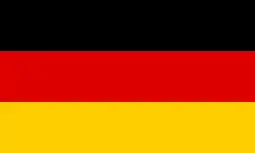 Germany – A typical old German village; A depiction of a scene from the German children's book Max and Moritz. A mime performer pretending to be an old woman cooking, when two others are on the roof, stealing her chicken by fishing it through the chimney. In the background some animals are seen, as well as some creatures from the fairy tales of the German Brothers Grimm.
Germany – A typical old German village; A depiction of a scene from the German children's book Max and Moritz. A mime performer pretending to be an old woman cooking, when two others are on the roof, stealing her chicken by fishing it through the chimney. In the background some animals are seen, as well as some creatures from the fairy tales of the German Brothers Grimm.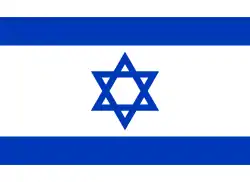 Israel – Two performers dressed as two of The Twelve Spies carry a big grape cluster, pretending to be walking, when the pictures in the background move to feature the different landscapes of Israel (another performer acts as an orchard worker). Eventually, the scenery changes to a typical Israeli beach, when the two performers take off their biblical style costumes and appear shirtless, wearing modern-day swim trunks.
Israel – Two performers dressed as two of The Twelve Spies carry a big grape cluster, pretending to be walking, when the pictures in the background move to feature the different landscapes of Israel (another performer acts as an orchard worker). Eventually, the scenery changes to a typical Israeli beach, when the two performers take off their biblical style costumes and appear shirtless, wearing modern-day swim trunks. France – An illustration of the famous Paris avenue of Champs-Élysées, with mime performers act as a typical French street painter, alongside a romantic couple dancing - initially with each other, and then joined by a drunk homeless who dances with them.
France – An illustration of the famous Paris avenue of Champs-Élysées, with mime performers act as a typical French street painter, alongside a romantic couple dancing - initially with each other, and then joined by a drunk homeless who dances with them..svg.png.webp) Belgium – The famous painting of The Peasant Wedding, created by Flemish artist Pieter Bruegel the Elder, "comes to life", with mime performers pretending to be the two bakers carrying the tray of bread, each pulling to a different direction and argue. Another performer acts as one of the peasants, asking for more bread.
Belgium – The famous painting of The Peasant Wedding, created by Flemish artist Pieter Bruegel the Elder, "comes to life", with mime performers pretending to be the two bakers carrying the tray of bread, each pulling to a different direction and argue. Another performer acts as one of the peasants, asking for more bread.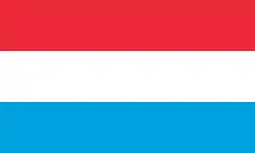 Luxembourg – Two mime performers play soldiers on a turret of the Grand Ducal Palace of Luxembourg. Initially, they pretend to look out for invaders, but then they pull transistor radios out of the edge of their swords and start dancing to rock 'n' roll music.
Luxembourg – Two mime performers play soldiers on a turret of the Grand Ducal Palace of Luxembourg. Initially, they pretend to look out for invaders, but then they pull transistor radios out of the edge of their swords and start dancing to rock 'n' roll music. Netherlands – Four mime performers, dressed in old Dutch clothes, pretend to be riding an invisible old kick scooter. The background feature a lot of windmills and some storks sit on them.
Netherlands – Four mime performers, dressed in old Dutch clothes, pretend to be riding an invisible old kick scooter. The background feature a lot of windmills and some storks sit on them.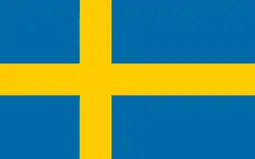 Sweden – The background features an illustration of an enchanted forest in the snow. Two mime performers, dressed as Trolls from the Scandinavian mythology, dance in the snow, and are joined by a third "troll".
Sweden – The background features an illustration of an enchanted forest in the snow. Two mime performers, dressed as Trolls from the Scandinavian mythology, dance in the snow, and are joined by a third "troll".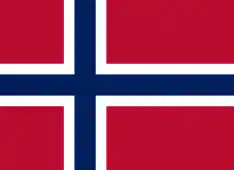 Norway – Three mime performers pretend to be Viking Warriors sailing on a ship, facing a strong wind. The background features illustrations of the Norwegian Fjords.
Norway – Three mime performers pretend to be Viking Warriors sailing on a ship, facing a strong wind. The background features illustrations of the Norwegian Fjords. United Kingdom – Representing the 'changing of the guard at Buckingham Palace, the background features the fence of Buckingham Palace, but instead of the palace, beyond fence there are famous London landmarks, such as the Big Ben and St Paul's Cathedral. A mime performer, dressed as an old English banker, reads a newspaper, when a life-size cardboard figure of the Queen's Guard is placed next to him. Another performer, dressed as a sculptor, places another guard figure and salutes it. He then takes the other guard figure, while the other figure suddenly "comes to life" when another performer is dressed as a guard, picking at the banker's newspaper.
United Kingdom – Representing the 'changing of the guard at Buckingham Palace, the background features the fence of Buckingham Palace, but instead of the palace, beyond fence there are famous London landmarks, such as the Big Ben and St Paul's Cathedral. A mime performer, dressed as an old English banker, reads a newspaper, when a life-size cardboard figure of the Queen's Guard is placed next to him. Another performer, dressed as a sculptor, places another guard figure and salutes it. He then takes the other guard figure, while the other figure suddenly "comes to life" when another performer is dressed as a guard, picking at the banker's newspaper.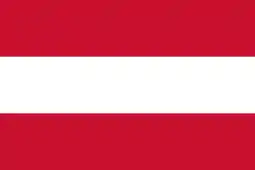 Austria – A mime performer dressed as a violinist pretends to be playing an invisible violin in a classical ballroom, and two other performers dance a Viennese Waltz. In the background there are illustrations of spectators.
Austria – A mime performer dressed as a violinist pretends to be playing an invisible violin in a classical ballroom, and two other performers dance a Viennese Waltz. In the background there are illustrations of spectators..svg.png.webp) Spain – The background features a typical Spanish bullfighting arena. One mime performer is dressed as a matador, holding a red cloth and pretends to be fighting an invisible bull. Another performer is dressed as a banderillero, while three others are dressed as spectators in the audience. There are also real hats moving on the heads of some of the illustrated spectators.
Spain – The background features a typical Spanish bullfighting arena. One mime performer is dressed as a matador, holding a red cloth and pretends to be fighting an invisible bull. Another performer is dressed as a banderillero, while three others are dressed as spectators in the audience. There are also real hats moving on the heads of some of the illustrated spectators.
Voting
Each country had a jury who awarded 12, 10, 8, 7, 6, 5, 4, 3, 2, 1 point(s) for their top ten songs. This was the last year in which the points were announced via order of appearance, as opposed to order of preference. From the next year's contest onwards, the points were announced in ascending order instead. This has remained in place ever since.
The voting was extremely close. Israel gained a good lead in the early stages of the voting, but Spain eventually caught up and took a good lead themselves. At the close of the penultimate jury's votes, Israel were one point behind Spain, and only the Spanish jury had yet to give their votes. Spain ended up giving Israel 10 points, causing the crowd to erupt into enormous cheers.
Interval act
The intermission between the songs and the voting was presented by a performance of the Shalom '79 Dancing Ensemble, who danced to a medley of Israeli Folk Dances. The performance was directed by the ensemble's manager and choreographer Gavri Levy.
Participating countries
At one point before the contest Turkey had planned to participate. The country would have appeared 11th on stage (between Israel and France), represented by Maria Rita Epik and 21. Peron with the song "Seviyorum" ("I'm Loving"). However, Turkey later ended up withdrawing from the contest following pressure from Arab states, who objected to a predominantly Muslim country taking part in a contest held in Israel.[4] Turkey did, however, take part in the contest held in Jerusalem in 1999.
As well as being broadcast live in the 19 competing countries, the contest was also broadcast in Romania, Hong Kong and Iceland.
Conductors
Each performance had a conductor who conducted the orchestra, except Italy.[5][6]
 Portugal – Thilo Krasmann
Portugal – Thilo Krasmann Italy – N/A
Italy – N/A Denmark – Allan Botschinsky
Denmark – Allan Botschinsky Ireland – Proinnsías Ó Duinn
Ireland – Proinnsías Ó Duinn Finland – Ossi Runne
Finland – Ossi Runne Monaco – Gérard Salesses
Monaco – Gérard Salesses Greece – Lefteris Halkiadakis
Greece – Lefteris Halkiadakis Switzerland – Rolf Zuckowski
Switzerland – Rolf Zuckowski Germany – Norbert Daum
Germany – Norbert Daum Israel – Kobi Oshrat
Israel – Kobi Oshrat France – Guy Mattéoni
France – Guy Mattéoni.svg.png.webp) Belgium – Francis Bay
Belgium – Francis Bay Luxembourg – Hervé Roy
Luxembourg – Hervé Roy Netherlands – Harry van Hoof
Netherlands – Harry van Hoof Sweden – Lars Samuelson
Sweden – Lars Samuelson Norway – Sigurd Jansen
Norway – Sigurd Jansen United Kingdom – Ken Jones
United Kingdom – Ken Jones Austria – Richard Oesterreicher
Austria – Richard Oesterreicher.svg.png.webp) Spain – José Luis Navarro
Spain – José Luis Navarro
Returning artists
Bold indicates a previous winner
| Artist | Country | Previous year(s) |
|---|---|---|
| Peter, Sue & Marc | 1971, 1976 | |
| Xandra | 1972 (Along with Andres Holten), 1976 (as Sandra Reemer) | |
| Anne-Marie David | 1973 (for | |
| Yardena Arazi (as presenter) | 1976 (as part of Chocolate, Menta, Mastik) | |
| Anita Skorgan | 1977 |
Results
The following tables reflect the confirmed, verified scores, which were adjusted after the live broadcast. During the voting announcement, due to a misunderstanding by the presenter Yardena Arazi, Spain appeared to award 10 points to both Portugal and Israel and these scores were added to the scoreboard. After the programme, verification confirmed that Portugal should only have received six points, leaving the total Portuguese score reduced by four points to 64.
| Draw | Country | Artist | Song | Language[7][8] | Place[9] | Points |
|---|---|---|---|---|---|---|
| 01 | Manuela Bravo | "Sobe, sobe, balão sobe" | Portuguese | 9 | 64 | |
| 02 | Matia Bazar | "Raggio di luna" | Italian | 15 | 27 | |
| 03 | Tommy Seebach | "Disco Tango" | Danish | 6 | 76 | |
| 04 | Cathal Dunne | "Happy Man" | English | 5 | 80 | |
| 05 | Katri Helena | "Katson sineen taivaan" | Finnish | 14 | 38 | |
| 06 | Laurent Vaguener | "Notre vie c'est la musique" | French | 16 | 12 | |
| 07 | Elpida | "Sokrati" (Σωκράτη) | Greek | 8 | 69 | |
| 08 | Peter, Sue and Marc, Pfuri, Gorps and Kniri | "Trödler und Co" | German | 10 | 60 | |
| 09 | Dschinghis Khan | "Dschinghis Khan" | German | 4 | 86 | |
| 10 | Milk and Honey | "Hallelujah" (הללויה) | Hebrew | 1 | 125 | |
| 11 | Anne-Marie David | "Je suis l'enfant soleil" | French | 3 | 106 | |
| 12 | Micha Marah | "Hey Nana" | Dutch | 18 | 5 | |
| 13 | Jeane Manson | "J'ai déjà vu ça dans tes yeux" | French | 13 | 44 | |
| 14 | Xandra | "Colorado" | Dutch | 12 | 51 | |
| 15 | Ted Gärdestad | "Satellit" | Swedish | 17 | 8 | |
| 16 | Anita Skorgan | "Oliver" | Norwegian | 11 | 57 | |
| 17 | Black Lace | "Mary Ann" | English | 7 | 73 | |
| 18 | Christina Simon | "Heute in Jerusalem" | German | 18 | 5 | |
| 19 | Betty Missiego | "Su canción" | Spanish | 2 | 116 |
Scoreboard
| Portugal | 64 | 6 | 2 | 5 | 4 | 4 | 10 | 5 | 3 | 3 | 3 | 6 | 7 | 6 | ||||||
|---|---|---|---|---|---|---|---|---|---|---|---|---|---|---|---|---|---|---|---|---|
| Italy | 27 | 8 | 8 | 3 | 8 | |||||||||||||||
| Denmark | 76 | 2 | 3 | 12 | 1 | 10 | 12 | 6 | 7 | 4 | 8 | 1 | 3 | 3 | 4 | |||||
| Ireland | 80 | 5 | 5 | 5 | 6 | 10 | 6 | 6 | 3 | 10 | 7 | 8 | 5 | 4 | ||||||
| Finland | 38 | 7 | 7 | 8 | 5 | 5 | 6 | |||||||||||||
| Monaco | 12 | 1 | 2 | 4 | 3 | 2 | ||||||||||||||
| Greece | 69 | 10 | 1 | 4 | 7 | 7 | 2 | 10 | 4 | 1 | 5 | 7 | 2 | 2 | 7 | |||||
| Switzerland | 60 | 7 | 1 | 10 | 2 | 2 | 7 | 4 | 7 | 8 | 12 | |||||||||
| Germany | 86 | 2 | 1 | 12 | 5 | 3 | 12 | 6 | 12 | 4 | 1 | 2 | 6 | 8 | 12 | |||||
| Israel | 125 | 12 | 6 | 12 | 12 | 8 | 4 | 5 | 1 | 2 | 8 | 1 | 12 | 12 | 12 | 8 | 10 | |||
| France | 106 | 6 | 10 | 1 | 10 | 8 | 10 | 5 | 6 | 12 | 12 | 5 | 7 | 6 | 5 | 3 | ||||
| Belgium | 5 | 2 | 1 | 2 | ||||||||||||||||
| Luxembourg | 44 | 7 | 3 | 4 | 4 | 5 | 3 | 2 | 4 | 2 | 10 | |||||||||
| Netherlands | 51 | 8 | 10 | 5 | 3 | 3 | 7 | 3 | 4 | 4 | 4 | |||||||||
| Sweden | 8 | 6 | 1 | 1 | ||||||||||||||||
| Norway | 57 | 3 | 3 | 8 | 6 | 2 | 8 | 2 | 6 | 10 | 7 | 1 | 1 | |||||||
| United Kingdom | 73 | 4 | 8 | 10 | 7 | 7 | 1 | 2 | 8 | 5 | 10 | 6 | 5 | |||||||
| Austria | 5 | 4 | 1 | |||||||||||||||||
| Spain | 116 | 12 | 3 | 6 | 12 | 12 | 8 | 8 | 12 | 10 | 10 | 7 | 1 | 5 | 10 | |||||
12 points
Below is a summary of all 12 points in the final:
| N. | Contestant | Nation(s) giving 12 points |
|---|---|---|
| 6 | ||
| 4 | ||
| 2 | ||
| 1 |
Spokespersons
Listed below is the order in which votes were cast during the 1979 contest along with the spokesperson who was responsible for announcing the votes for their respective country.
 Portugal – João Abel Fonseca[12]
Portugal – João Abel Fonseca[12] Italy – Paola Perissi
Italy – Paola Perissi Denmark – Bent Henius
Denmark – Bent Henius Ireland – David Heffernan
Ireland – David Heffernan Finland – Kaarina Pönniö[13]
Finland – Kaarina Pönniö[13] Monaco – Carole Chabrier
Monaco – Carole Chabrier Greece – Niki Venega
Greece – Niki Venega Switzerland – Michel Stocker[14]
Switzerland – Michel Stocker[14] Germany – Lotti Ohnesorge[15]
Germany – Lotti Ohnesorge[15] Israel – Dan Kaner[16]
Israel – Dan Kaner[16] France – Denise Fabre
France – Denise Fabre.svg.png.webp) Belgium – An Ploegaerts
Belgium – An Ploegaerts Luxembourg – Jacques Harvey
Luxembourg – Jacques Harvey Netherlands – Ivo Niehe[17]
Netherlands – Ivo Niehe[17] Sweden – Sven Lindahl[18]
Sweden – Sven Lindahl[18] Norway – Sverre Christophersen[19]
Norway – Sverre Christophersen[19] United Kingdom – Colin Berry[6]
United Kingdom – Colin Berry[6] Austria – Jenny Pippal
Austria – Jenny Pippal.svg.png.webp) Spain – Manuel Almendros
Spain – Manuel Almendros
Broadcasts
Each national broadcaster also sent a commentator to the contest, in order to provide coverage of the contest in their own native language.
| Country | Broadcaster(s) | Commentator(s) | Ref(s) |
|---|---|---|---|
| FS1 | Max Schautzer | [20] | |
| Hitradio Ö3 | Walter Richard Langer | ||
| BRT TV1 | Dutch: Luc Appermont | [21] | |
| RTBF1 | French: Paule Herreman | [22] | |
| BRT Radio 1 | Dutch: Nand Baert and Herwig Haes | ||
| RTBF La Première | French: Marc Danval | ||
| DR TV | Jørgen de Mylius | [23] | |
| DR P3 | Kjeld Koplev | ||
| YLE TV1 | Anja-Maija Leppänen | [24] | |
| YLE Rinnakkaisohjelma | Matti Paalosmaa and Jaakko Salonoja | ||
| TF1 | Marc Menant | [22][25] | |
| Deutsches Fernsehen | Ado Schlier and Gabi Schnelle | [15] | |
| Deutschlandfunk/Bayern 2 | Wolf Mittler | ||
| ERT | Mako Georgiadou | [26] | |
| Proto Programma | Dimitris Konstantaras | ||
| RTÉ 1 | Mike Murphy | ||
| RTÉ Radio | Liam Devally | ||
| Israeli Television | No commentator | ||
| Reshet Gimel | Yoram Arbel | [27] | |
| Rete 1 | Rosanna Vaudetti | ||
| RTL Télé Luxembourg | Jacques Navadic | [22] | |
| RTL | André Torrent | ||
| Télé Monte Carlo | José Sacré | ||
| Nederland 2 | Willem Duys | [28] | |
| NRK | Egil Teige | [29] | |
| NRK P1 | Erik Heyerdahl | ||
| RTP1 | Fialho Gouveia | [30] | |
| TVE1 | Miguel de los Santos | [31] | |
| SR TV1 | Ulf Elfving | [18] | |
| SR P3 | Kent Finell | [18] | |
| TV DRS | German: Max Rüeger | [32] | |
| TSR | French: Georges Hardy | [25] | |
| TSI | Italian: Giovanni Bertini | ||
| BBC1 | John Dunn | [6][33] | |
| BBC Radio 2 | Ray Moore | [6] |
| Country | Broadcaster(s) | Commentator(s) | Ref(s) |
|---|---|---|---|
| TVB Jade | Cantonese: Regina Hing Yue Tsang (曾慶瑜), Lee Chi-chung (李志中) | [34] | |
| TVB Pearl | English: George Lam (林子祥) | ||
| Sjónvarpið | Unknown | [6] | |
| TVR | Unknown | [6] | |
| Ankara Television | Bülend Özveren | ||
| TVB 2 | Serbo-Croatian: Milovan Ilić | [6] | |
| TVZ 1 | Serbo-Croatian: Oliver Mlakar | ||
| TVL 1 | Slovene: Tomaž Terček |
Incidents
Religious complaints
Religious politicians in Israel complained about the dress rehearsals taking part on Saturday morning, thus violating Jewish religious laws, prohibiting working on the Sabbath.
Swiss airport arrival
The Swiss delegation had to face a thorough security check at the airport, with the security officers demanding an explanation for the amount of garden tools they brought (which they brought for their performance).
Belgian language
When calling the various national juries, the presenters greeted every country, saying "good evening" and "thank you" in their own national language. During the dress rehearsal, when Yardena Arazi called the Belgian jury, she greeted them in French, although the Belgian entry was represented this year by the Flemish broadcaster VRT. The Belgian delegation protested that their spokesperson was not greeted in Dutch. The production team apologised, and during the live show, Arazi did greet them in Dutch. Ever since, VRT presents their votes in English (except for 1987), to distinguish themselves from the Walloon broadcaster RTBF.
Israeli entrant name
During the week of rehearsals, Gali Atari, one of the members of newly formed Israeli group Milk and Honey, demanded for the name of the group to be changed to "Gali Atari & Milk and Honey". The other members of the group (Reuven Gvirtz, Yehuda Tamir, and Shmulik Bilu) expressed their objection. The argument was ended by the IBA, who told Atari that the Israeli entry has already been registered as "Milk and Honey", and according to the EBU rules cannot be changed. They did promise her, however, that should Israel win the contest, the presenters will declare the winners as "Gali Atari & Milk and Honey". Israel eventually won, and presenter Daniel Pe'er did state the name of the group in that way in Hebrew and English. However, when it was presenter Yardena Arazi's turn to declare the winner in French, she said "Milk and Honey" only, without mentioning Atari's name. Gossip tabloids in Israel claimed Arazi said before the show: "I'm not willing to take part in Gali Atari's caprices".
See also
References
- "Jerusalem 1979". Eurovision.tv.
- "International Convention Centre - Binyanei Ha'Ooma], WCities Destination Guide". eventseeker.
- "An interview with Dov Ben David on the preparations for the Eurovision in Jerusalem". Retrieved June 17, 2020.
- O'Connor, John Kennedy. The Eurovision Song Contest: The Official History. Carlton Books, UK. 2007 ISBN 978-1-84442-994-3
- "And the conductor is..." Retrieved 24 August 2020.
- Roxburgh, Gordon (2014). Songs for Europe: The United Kingdom at the Eurovision Song Contest. Volume Two: The 1970s. Prestatyn: Telos Publishing. pp. 352–365. ISBN 978-1-84583-093-9.
- "Eurovision Song Contest 1979". The Diggiloo Thrush. Retrieved 4 March 2012.
- "Eurovision Song Contest 1979". 4Lyrics.eu. Retrieved 16 September 2020.
- "Final of Jerusalem 1979". European Broadcasting Union. Archived from the original on 11 April 2021. Retrieved 11 April 2021.
- "Results of the Final of Jerusalem 1979". European Broadcasting Union. Archived from the original on 11 April 2021. Retrieved 11 April 2021.
- "Eurovision Song Contest 1979 – Scoreboard". European Broadcasting Union. Archived from the original on 24 September 2015. Retrieved 23 July 2021.
- "Comentadores Do ESC – escportugalforum.pt.vu | o forum eurovisivo português". 21595.activeboard.com. Archived from the original on April 21, 2012. Retrieved 2012-08-10.
- "Selostajat ja taustalaulajat läpi vuosien? • Viisukuppila". Viisukuppila.fi. Retrieved 2012-08-10.
- Baumann, Peter Ramón (OGAE Switzerland)
- "Eurovision Song Contest 1979". Ecgermany.de. Retrieved 2012-08-10.
- "פורום אירוויזיון". Sf.tapuz.co.il. 1999-09-13. Archived from the original on October 8, 2011. Retrieved 2012-08-10.
- "Hallelujah: het goede liedje op de goede plaats op de goede tijd, Leidse Courant, 2 April 1979
- "Infosajten.com". Infosajten.com. Archived from the original on July 18, 2012. Retrieved 2012-08-10.
- Dyrseth, Seppo (OGAE Norway)
- "Unterhaltungssendungen im Fernsehen Max Schautzer – Die offizielle Homepage". Max-schautzer.de. 1999-02-22. Retrieved 2012-08-10.
- Adriaens, Manu & Loeckx-Van Cauwenberge, Joken. Blijven kiken!. Lannoo, Belgium. 2003 ISBN 90-209-5274-9
- Christian Masson. "1979 – Jerusalem". Songcontest.free.fr. Retrieved 2012-08-10.
- "Forside". esconnet.dk. Archived from the original on 2012-03-24. Retrieved 2012-08-10.
- "Selostajat ja taustalaulajat läpi vuosien? • Viisukuppila". Viisukuppila.fi. Retrieved 2012-08-10.
- "Au Grand Prix Eurovision de la Chanson". Radio TV - Je vois tout. Lausanne, Switzerland: Le Radio SA. 29 March 1979.
- "Η Μακώ Γεωργιάδου και η EUROVISION (1970–1986)". Retromaniax.gr. Archived from the original on 2012-05-30. Retrieved 2012-08-10.
- "Eurovision". Ishim.co.il (in Hebrew).
- "Welkom op de site van Eurovision Artists". Eurovisionartists.nl. Retrieved 2012-08-10.
- "Hvem kommenterte før Jostein Pedersen? – Debattforum". Nrk.no. Archived from the original on November 2, 2012. Retrieved 2012-08-10.
- "Aleluia, venceu o balão de Israel", Diário de Lisboa, 2 April 1979
- "FORO FESTIVAL DE EUROVISIÓN • Ver Tema – Uribarri comentarista Eurovision 2010". Eurosongcontest.phpbb3.es. Archived from the original on 2012-03-17. Retrieved 2012-08-10.
- Grandprix-Skandal in Jerusalem?, Thuner Tagblatt, 31 March 1979
- "Grand Final: 1979, 1979, Eurovision Song Contest". BBC.
- "本年度歐洲歌唱大賽 無線獲得獨家播映權 翡翠明珠台同時直播". Wah Kiu Yat Po (華僑日報) (in Traditional Chinese). 31 March 1979. p. 7.4.
External links
| Wikimedia Commons has media related to Eurovision Song Contest 1979. |
